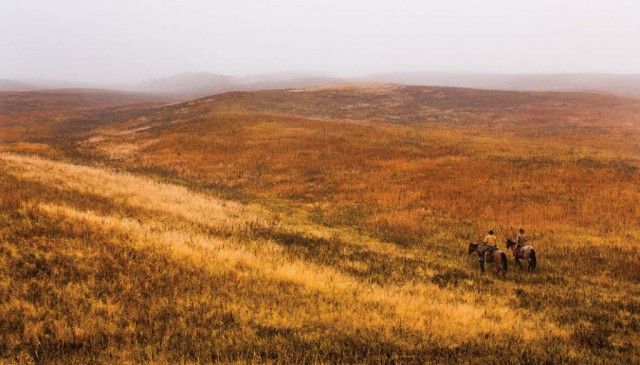
By Eric Fowler
Fall can be a magical time for photography. But when the last of the golden leaves fall from the trees, some photographers find themselves wishing for a white Christmas … or Thanksgiving, or any day for that matter … and waiting impatiently for spring and the return of green to the forest.
But wonderful fall color can be found long after the leaves fall. In fact, the trees aren’t even the first vegetation to put on an autumnal display. Native grasses win that race, and prairies can provide stunning photo subjects well into winter.
“Grasses hold their gold color pretty well – native ones, anyway – well into the winter unless they get squished down by snows,” said Chris Helzer, an ecologist with The Nature Conservancy and also a nature photographer.
“Big bluestem and little bluestem are probably the best for the nice rich reds, but Indiangrass, switchgrass, and even prairie cordgrass also have good color. Forbs such as round-headed bush clover and sunflowers – and many others – provide good texture as dark, interestingly-shaped accents.”
Native grasses can be especially colorful when soaked with morning dew and can glow when backlit by the early or late-day sun. Large ungrazed Sandhills pastures and places like the Valentine National Wildlife Refuge provide a seemingly endless canvas of color.
But the smaller native and restored grasslands Helzer manages along the Platte River in central Nebraska, remnants of tallgrass prairie managed by the National Audubon Society in southeastern Nebraska, sandsage prairie in southwestern Nebraska, mixed grass prairie in the Panhandle, and even a small patch of native grasses in the city can provide interesting photo subjects.
So instead of waiting for the first snow to fall, grab your camera and find a prairie – for fall color isn’t over quite yet.
